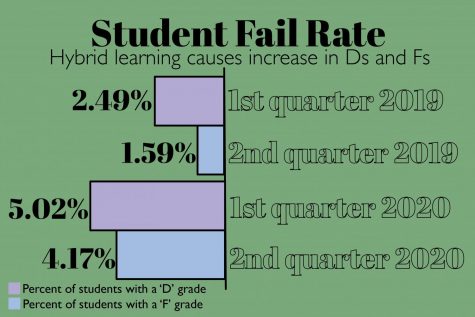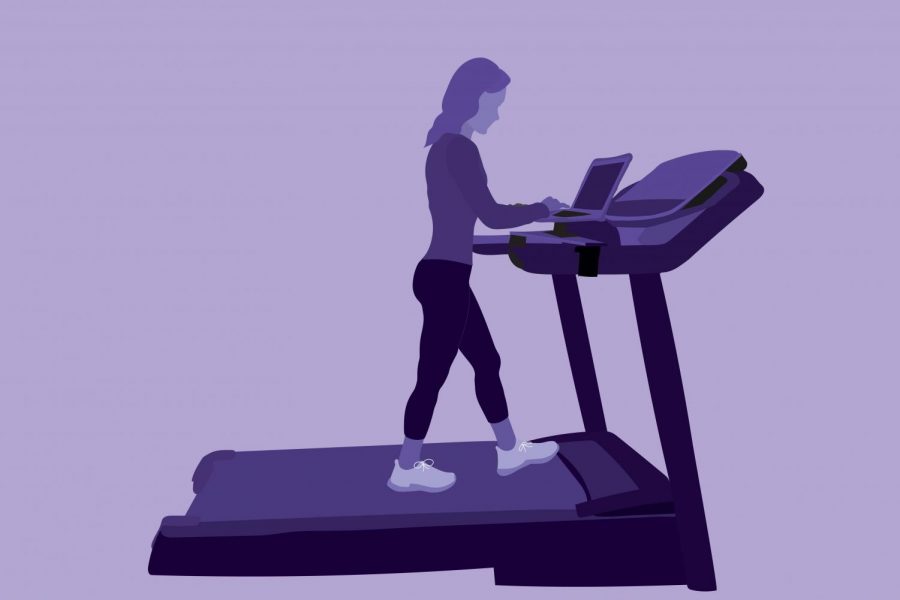By Molly Smith
Pandemic causes students to alter at-home study spaces
Psychology teacher Kirsten Crandall explains the psychology behind study spaces
Thrown into a year of firsts, many students struggled to adapt to remote learning, whether it be during the all-remote portion of the year from December through January to the students who choose to be remote full-time. Accompanying the switch to remote learning, the district saw a severe drop of passing grades, with over a 3% increase in students with F’s and almost 10% increase of students with D’s from the 2019 school year.
 One thing that has contributed to the decline of grades are the study spaces that students choose to spend their time doing school work at home. Without a traditional classroom, many students attended their online Zoom classes in bed, with friends, at a desk or even on a treadmill.
One thing that has contributed to the decline of grades are the study spaces that students choose to spend their time doing school work at home. Without a traditional classroom, many students attended their online Zoom classes in bed, with friends, at a desk or even on a treadmill.
According to psychology teacher Kirsten Crandall, creating a specific place dedicated to studying and school is a beneficial practice.
“From a psychological standpoint, the best place to study will be one that allows for optimal neural firing and memory formation,” Crandall said. “Practically speaking, this usually looks like an environment where the student is relaxed enough to focus solely on the content but is stimulated enough to fully process and experience conscious cognition over their learning.”
While there is not one perfect studying place for everyone, Crandall argues that there are a few key staples to a healthy work space.
“For most people, this might translate into a peaceful room or desk area where stressful stimuli is minimized,” Crandall said. “Light a candle and put on your sweatpants, but make sure you are sitting up and have enough bright light to stay alert.”
While it is not a necessity, Crandall believes that having one, fixed study space can be beneficial.
“Having a fixed location to study versus a varying one is somewhat up to the needs of the student. However, a general rule of thumb is that it is easiest to get into the relaxed but focused headspace quickly by having a room or space dedicated to learning,” Crandall said. “This allows the students to tap into study mode more quickly and effectively. We associate our environments with what we have learned typically occurs there. Eventually, we can automatically respond to our study space with focus.”
While there can be benefits to various types of study spaces, it is best to mimic whatever environment you will be tested in, according to Crandall.
“There is a concept called context-dependent memory. It refers to our human tendency to remember information best when we are in similar contexts in which we first learned the information,” Crandall said. “So, if you want to remember what you’re studying on a test, which you will be taking sitting up and in bright lighting, you should study the tested material in a somewhat similar mental and physical context.”



